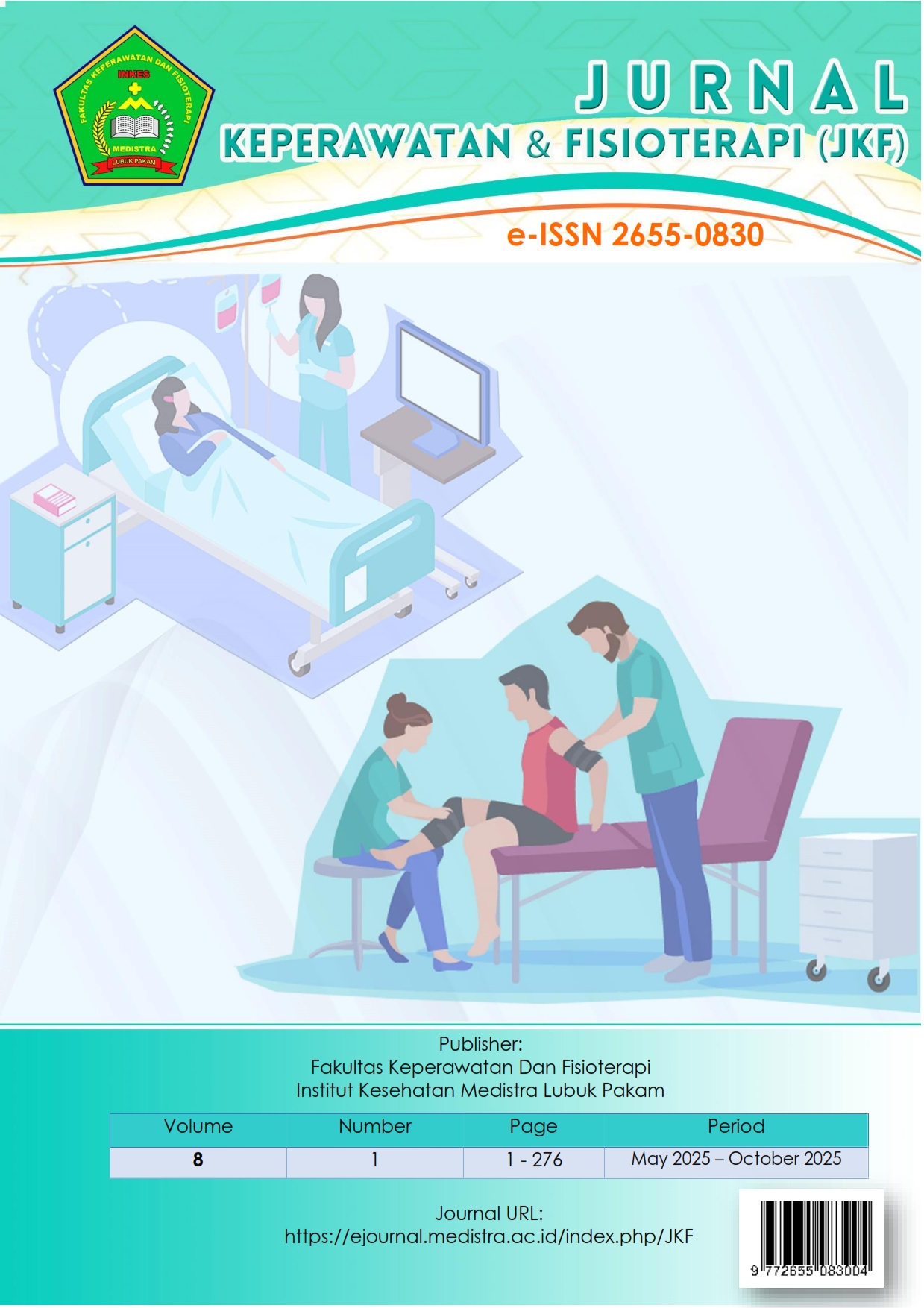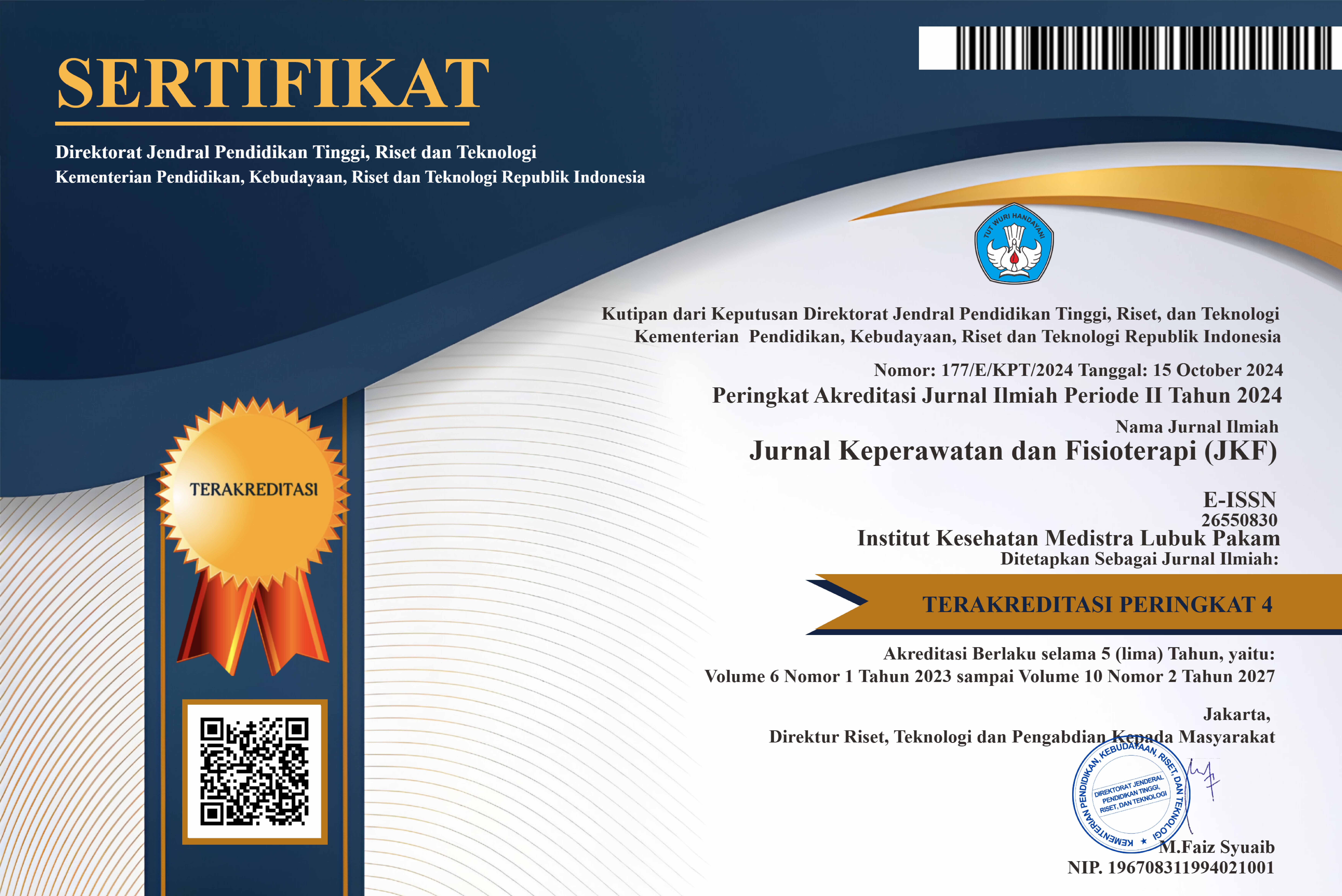DNMT1 Level as Biomarker for Early Detection of Nasopharyngeal Carcinoma
DOI:
https://doi.org/10.35451/qwakjv41Keywords:
Biomarker; Deteksi Dini; DNMT1; Karsinoma Nasofaring; MetilasiAbstract
Introduction: Nasopharyngeal carcinoma (NPC) is a malignant disease often diagnosed at an advanced stage. Early detection of NPC is necessary to reduce morbidity and mortality of this disease. To date, early detection methods for NPC still have limitations, especially in terms of positive predictive value. Identification of DNA methylation abnormalities has been studied for its role as a marker for early detection of NPC. Objective: This review describes the potential of DNMT1, an enzyme involved in DNA methylation, as a biomarker for early detection of NPC. Methods: We conducted a literature search using PubMed and Google Scholar databases. The keywords used were "nasopharyngeal carcinoma AND DNMT1", nasopharyngeal carcinoma AND early detection, "nasopharyngeal carcinoma AND screening", nasopharyngeal carcinoma OR DNMT1, “DNMT1 OR Carcinoma”, nasopharyngeal carcinoma OR screening, and nasopharyngeal carcinoma OR early detection. Results: Increased DNMT1 expression is associated with global hypermethylation which is part of the early pathogenesis of NPC. LMP1, as an oncoprotein released by EBV, increases DNMT1 expression and activity. Conclusion: High DNMT1 expression in NPC indicates its potential as an early detection method for NPC.
Downloads
References
[1] Ferlay J et al., “Global Cancer Observatory: Cancer Today,” Lyon, France: International Agency for Research on Cancer. Available from: https://gco.iarc.who.int/today, accessed [6 2 2024]. Jan. 2024.
[2] A. Balasubramanian and N. Mat Lazim, “Nasopharyngeal carcinoma screening and prevention programs,” in An Evidence-Based Approach to the Management of Nasopharyngeal Cancer: From Basic Science to Clinical Presentation and Treatment, 2020. doi: 10.1016/B978-0-12-814403-9.00012-4.
[3] E. Waliyanti, F. S. T. Dewi, S. Supriyati, and R. Fles, “Treatment-seeking behaviour of nasopharyngeal cancer patients in Yogyakarta, Indonesia,” Pan African Medical Journal, vol. 29, 2018, doi: 10.11604/pamj.2018.29.98.12817.
[4] R. W. Januarti, “Pendekatan deteksi dini non invasif karsinoma nasofaring,” Wellness And Healthy Magazine, vol. 2, no. 1, 2020, doi: 10.30604/well.57212020.
[5] K. M. O. Kumar and R. B. S. M. N. Mydin, “Nasopharyngeal cancer: Geographic variation and risk factors,” Malaysian Journal of Medicine and Health Sciences, vol. 15, 2019.
[6] S. M. Sekarutami, S. Gondhowiardjo, R. Yuliasti, L. Syarifah, and M. Adham, “Survival of nasopharyngeal cancer in national referral hospital of Indonesia: A study on radiotherapy patients,” Oral Oncol, vol. 106, 2020, doi: 10.1016/j.oraloncology.2020.104707.
[7] J. K. Tay et al., “A comparison of EBV serology and serum cell-free DNA as screening tools for nasopharyngeal cancer: Results of the Singapore NPC screening cohort,” Int J Cancer, vol. 146, no. 10, 2020, doi: 10.1002/ijc.32774.
[8] Y. Yuan, F. Ye, J. H. Wu, X. Y. Fu, Z. X. Huang, and T. Zhang, “Early screening of nasopharyngeal carcinoma,” 2023. doi: 10.1002/hed.27466.
[9] W. Dai, H. Zheng, A. K. L. Cheung, and M. L. Lung, “Genetic and epigenetic landscape of nasopharyngeal carcinoma,” 2016. doi: 10.21037/cco.2016.03.06.
[10] R. Tan et al., “Clinical utility of Epstein-Barr virus DNA and other liquid biopsy markers in nasopharyngeal carcinoma,” 2020. doi: 10.1002/cac2.12100.
[11] L. Li, J. Xie, B. Ma, A. T. C. Chan, and Q. Tao, “CpG methylation as epigenetic biomarkers for nasopharyngeal carcinoma diagnostics,” Annals of Nasopharynx Cancer, vol. 6, 2022, doi: 10.21037/anpc-21-9.
[12] A. Nishiyama and M. Nakanishi, “Navigating the DNA methylation landscape of cancer,” 2021. doi: 10.1016/j.tig.2021.05.002.
[13] T. Ma, H. Li, M. Sun, Y. Yuan, and L. P. Sun, “DNMT1 overexpression predicting gastric carcinogenesis, subsequent progression and prognosis: A meta and bioinformatic analysis,” Oncotarget, vol. 8, no. 56, 2017, doi: 10.18632/oncotarget.21480.
[14] C. M. Tsang, V. W. Y. Lui, J. P. Bruce, T. J. Pugh, and K. W. Lo, “Translational genomics of nasopharyngeal cancer,” 2020. doi: 10.1016/j.semcancer.2019.09.006.
[15] S. Dhe-Paganon, F. Syeda, and L. Park, “DNA methyl transferase 1: Regulatory mechanisms and implications in health and disease,” 2011.
[16] J. Zhang, C. Yang, C. Wu, W. Cui, and L. Wang, “DNA methyltransferases in cancer: Biology, paradox, aberrations, and targeted therapy,” 2020. doi: 10.3390/cancers12082123.
[17] W. Zhang and J. Xu, “DNA methyltransferases and their roles in tumorigenesis,” 2017. doi: 10.1186/s40364-017-0081-z.
[18] C. L. Tsai et al., “Activation of DNA methyltransferase 1 by EBV LMP1 involves c-Jun NH 2-terminal kinase signaling,” Cancer Res, vol. 66, no. 24, 2006, doi: 10.1158/0008-5472.CAN-06-2194.
[19] Z. W. Lu et al., “MiR-152 functioning as a tumor suppressor that interacts with DNMT1 in nasopharyngeal carcinoma,” Onco Targets Ther, vol. 11, 2018, doi: 10.2147/OTT.S154464.
[20] M. Ahmadi Hedayati, A. Ahmadi, and Z. Khatooni, “DNMT1 Gene Expression in Patients with Helicobacter pylori Infection,” Scientific World Journal, vol. 2022, 2022, doi: 10.1155/2022/2386891.
[21] C. N. Tsai, C. L. Tsai, K. P. Tse, H. Y. Chang, and Y. S. Chang, “The Epstein-Barr virus oncogene product, latent membrane protein 1, induces the down-regulation of E-cadherin gene expression via activation of DNA methyltransferases,” Proc Natl Acad Sci U S A, vol. 99, no. 15, 2002, doi: 10.1073/pnas.152059399.
[22] L. Ka-Yue Chow et al., “Epigenomic landscape study reveals molecular subtypes and EBV-associated regulatory epigenome reprogramming in nasopharyngeal carcinoma,” EBioMedicine, vol. 86, 2022, doi: 10.1016/j.ebiom.2022.104357.
[23] D. H. Heiland et al., “C-Jun-N-terminal phosphorylation regulates DNMT1 expression and genome wide methylation in gliomas,” Oncotarget, vol. 8, no. 4, 2017, doi: 10.18632/oncotarget.14330.
[24] Y. Jiang et al., “Multi-omic analyses reveal aberrant DNA methylation patterns and the associated biomarkers of nasopharyngeal carcinoma and its cancer stem cells,” Sci Rep, vol. 15, no. 1, p. 9733, Mar. 2025, doi: 10.1038/s41598-025-87038-z.
[25] Y. Kanai, “Molecular pathological approach to cancer epigenomics and its clinical application,” 2024. doi: 10.1111/pin.13418.
[26] K. Ohara et al., “Genes involved in development and differentiation are commonly methylated in cancers derived from multiple organs: A single-institutional methylome analysis using 1007 tissue specimens,” Carcinogenesis, vol. 38, no. 3, 2017, doi: 10.1093/carcin/bgw209.
[27] L. Song et al., “A high sensitivity strategy of DNMT1 activity detection based on self-assembled nucleic acid probe signal amplification technique,” Sens Actuators B Chem, vol. 385, 2023, doi: 10.1016/j.snb.2023.133610.
[28] Y. Saito, Y. Kanai, M. Sakamoto, H. Saito, H. Ishii, and S. Hirohashi, “Expression of mRNA for DNA methyltransferases and methyl-CpG-binding proteins and DNA methylation status on CpG islands and pericentromeric satellite regions during human hepatocarcinogenesis,” Hepatology, vol. 33, no. 3, 2001, doi: 10.1053/jhep.2001.22507.
[29] T. Etoh et al., “Increased DNA Methyltransferase 1 (DNMT1) Protein Expression Correlates Significantly with Poorer Tumor Differentiation and Frequent DNA Hypermethylation of Multiple CpG Islands in Gastric Cancers,” American Journal of Pathology, vol. 164, no. 2, 2004, doi: 10.1016/S0002-9440(10)63156-2.
[30] T. Nakagawa, Y. Kanai, Y. Saito, T. Kitamura, T. Kakizoe, and S. Hirohashi, “Increased DNA methyltransferase 1 protein expression in human transitional cell carcinoma of the bladder,” Journal of Urology, vol. 170, no. 6 I, 2003, doi: 10.1097/01.ju.0000095919.50869.c9.
[31] T. Nakagawa, Y. Kanai, S. Ushijima, T. Kitamura, T. Kakizoe, and S. Hirohashi, “DNA hypermethylation on multiple CpG islands associated with increased DNA methyltransferase DNMT1 protein expression during multistage urothelial carcinogenesis,” Journal of Urology, vol. 173, no. 5, 2005, doi: 10.1097/01.ju.0000154632.11824.4d.
[32] Y. Liu et al., “Establishment of VCA and EBNA1 IgA-based combination by enzyme-linked immunosorbent assay as preferred screening method for nasopharyngeal carcinoma: A two-stage design with a preliminary performance study and a mass screening in southern China,” Int J Cancer, vol. 131, no. 2, 2012, doi: 10.1002/ijc.26380.
[33] K. C. A. Chan et al., “Analysis of Plasma Epstein–Barr Virus DNA to Screen for Nasopharyngeal Cancer,” New England Journal of Medicine, vol. 377, no. 6, 2017, doi: 10.1056/nejmoa1701717.
[34] W. Jiang, R. Cai, and Q. Q. Chen, “DNA methylation biomarkers for nasopharyngeal carcinoma: Diagnostic and prognostic tools,” 2016. doi: 10.7314/APJCP.2015.16.18.8059.
[35] T. Qian, Z. Zhou, Q. Zhang, Y. L. Liou, and H. Zhou, “SEPT9, H4C6, and RASSF1A methylation in nasopharyngeal swabs: A reflection of potential minimally invasive biomarkers for early screening of nasopharyngeal cancer,” Medicine (United States), vol. 102, no. 50, 2023, doi: 10.1097/MD.0000000000036583.
[36] Z. Y. Su, P. Y. Siak, C. O. Leong, and S. C. Cheah, “The role of Epstein–Barr virus in nasopharyngeal carcinoma,” 2023.
Downloads
Published
Issue
Section
License
Copyright (c) 2025 Raudah Putri Syari, Zulham Yamamoto, Farhat, Sry Suryani Widjaja, Ririe Fachrina Malisie

This work is licensed under a Creative Commons Attribution 4.0 International License.
Copyright in each article is the property of the Author.


























